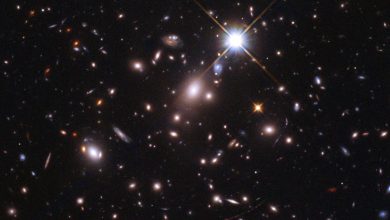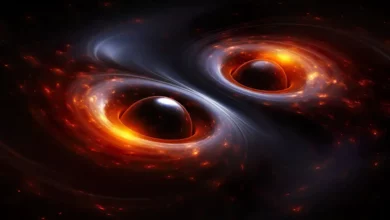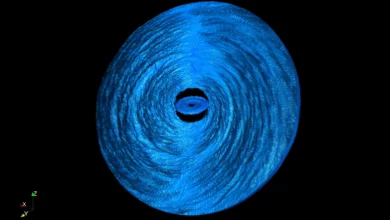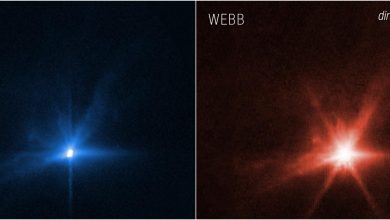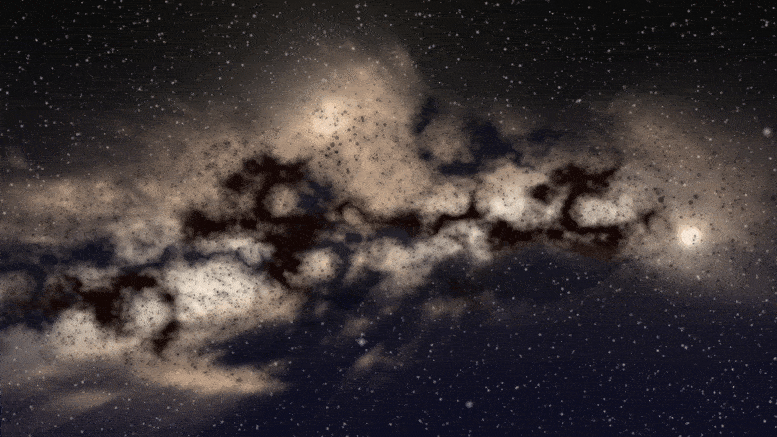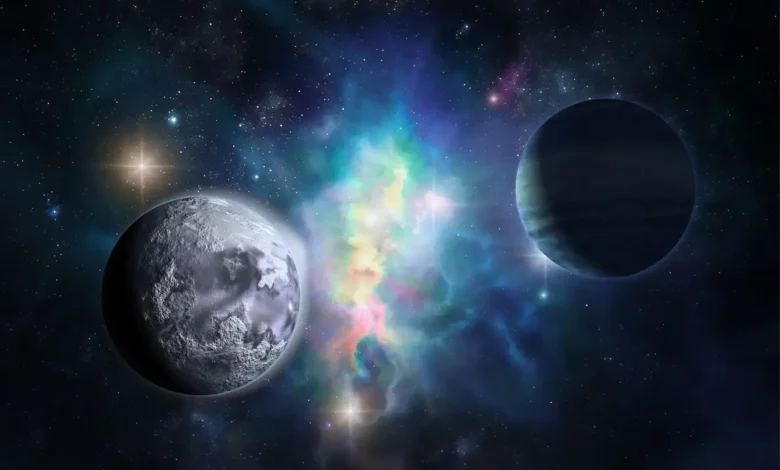
Lead Image: A recent study led by SETI Institute Senior Research Scientist Kim Warren-Rhodes and published in Nature Astronomy brings us closer to discovering extraterrestrial life by mapping scarce life forms in extreme environments. The interdisciplinary research focuses on life hidden within salt domes, rocks, and crystals at Salar de Pajonales, situated at the border of the Chilean Atacama Desert and Altiplano. This study could help pinpoint exact locations to search for life on other planets, despite the limited opportunities to collect samples or access remote sensing instruments.
Wouldn’t discovering life on other worlds be made easier if we knew the exact locations to search? However, opportunities to collect samples or access remote sensing instruments are limited. A recent study, published in Nature Astronomy and led by SETI Institute Senior Research Scientist Kim Warren-Rhodes, brings us one step closer to finding extraterrestrial life. The interdisciplinary study maps the scarce life forms hidden within salt domes, rocks, and crystals at Salar de Pajonales, located at the boundary of the Chilean Atacama Desert and Altiplano.
Warren-Rhodes teamed up with Michael Phillips from the Johns Hopkins Applied Physics Lab and Freddie Kalaitzis from the University of Oxford to train a machine-learning model that could recognize patterns and rules associated with the distribution of life forms. This model was designed to predict and identify similar distributions in untrained data. By combining statistical ecology with AI/ML, the scientists achieved a remarkable outcome: the ability to locate and detect biosignatures up to 87.5% of the time, compared to just 10% with a random search. This also reduced the search area by as much as 97%.
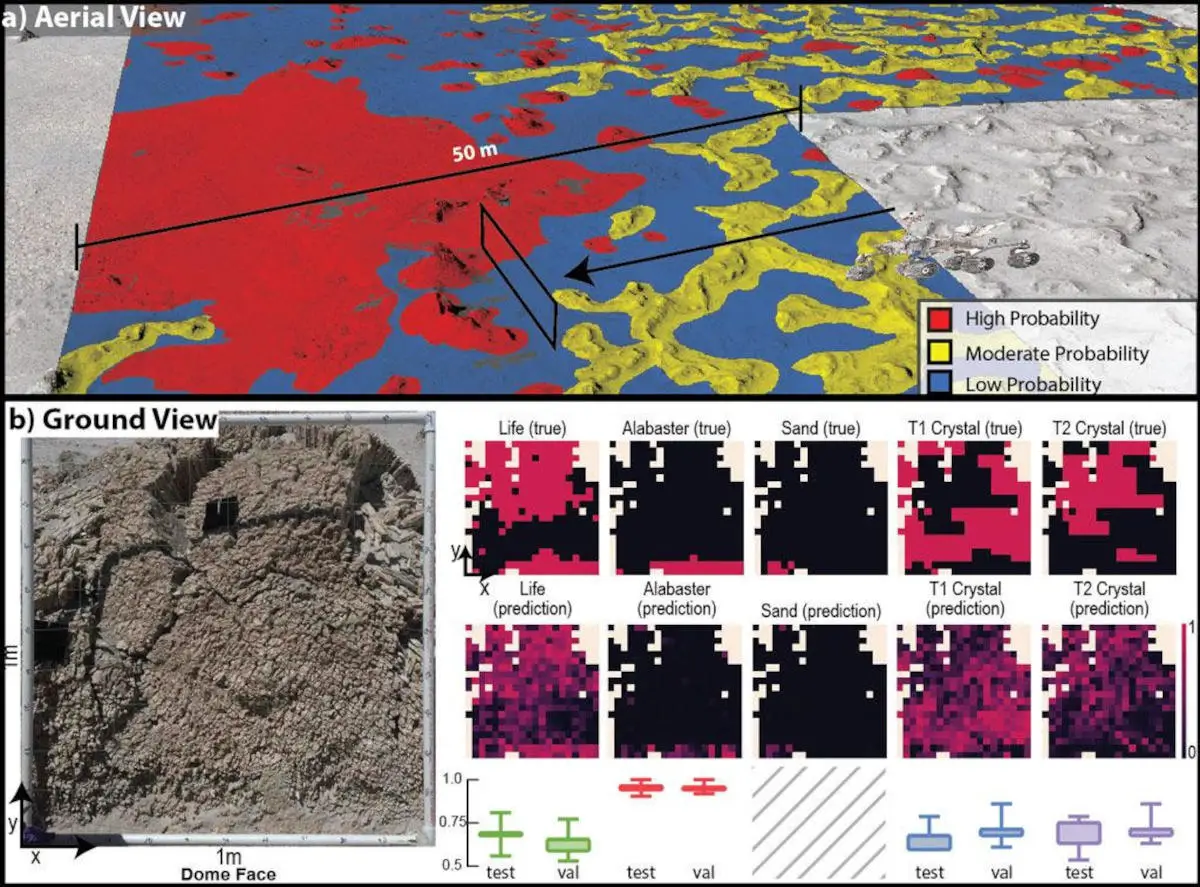
“Our framework allows us to combine the power of statistical ecology with machine learning to discover and predict the patterns and rules by which nature survives and distributes itself in the harshest landscapes on Earth,” said Rhodes. “We hope other astrobiology teams adapt our approach to mapping other habitable environments and biosignatures. With these models, we can design tailor-made roadmaps and algorithms to guide rovers to places with the highest probability of harboring past or present life—no matter how hidden or rare.”
Video showing the major concepts of integrating datasets from orbit to the ground. The first frames zoom in from a global view to an orbital image of Salar de Pajonales. The salar is then overlain with an interpretation of its compositional variability derived from ASTER multispectral data. The next sequence of frames transitions to drone-derived images of the field site within Salar de Pajonales. Note features of interest that become identifiable in the scene, starting with polygonal networks of ridges, then individual gypsum domes and polygonal patterned ground, and ending with individual blades of selenite. The video ends with a first-person view of a set of gypsum domes studied in the article using machine learning techniques. Credit: M. Phillips
Ultimately, similar algorithms and machine learning models for many different types of habitable environments and biosignatures could be automated onboard planetary robots to efficiently guide mission planners to areas at any scale with the highest probability of containing life.
Rhodes and the SETI Institute NASA Astrobiology Institute (NAI) team used the Salar de Pajonales, as a Mars analog. Pajonales is a high altitude (3,541 m), high U/V, hyperarid, dry salt lakebed, considered inhospitable to many life forms but still habitable.
During the NAI project’s field campaigns, the team collected over 7,765 images and 1,154 samples and tested instruments to detect photosynthetic microbes living within the salt domes, rocks, and alabaster crystals. These microbes exude pigments that represent one possible biosignature on NASA’s Ladder of Life Detection.
At Pajonales, drone flight imagery connected simulated orbital (HiRISE) data to ground sampling and 3D topographical mapping to extract spatial patterns. The study’s findings confirm (statistically) that microbial life at the Pajonales terrestrial analog site is not distributed randomly but concentrated in patchy biological hotspots strongly linked to water availability at km to cm scales.
Next, the team trained convolutional neural networks (CNNs) to recognize and predict macro-scale geologic features at Pajonales—some of which, like patterned ground or polygonal networks, are also found on Mars—and micro-scale substrates (or ‘micro-habitats’) most likely to contain biosignatures.
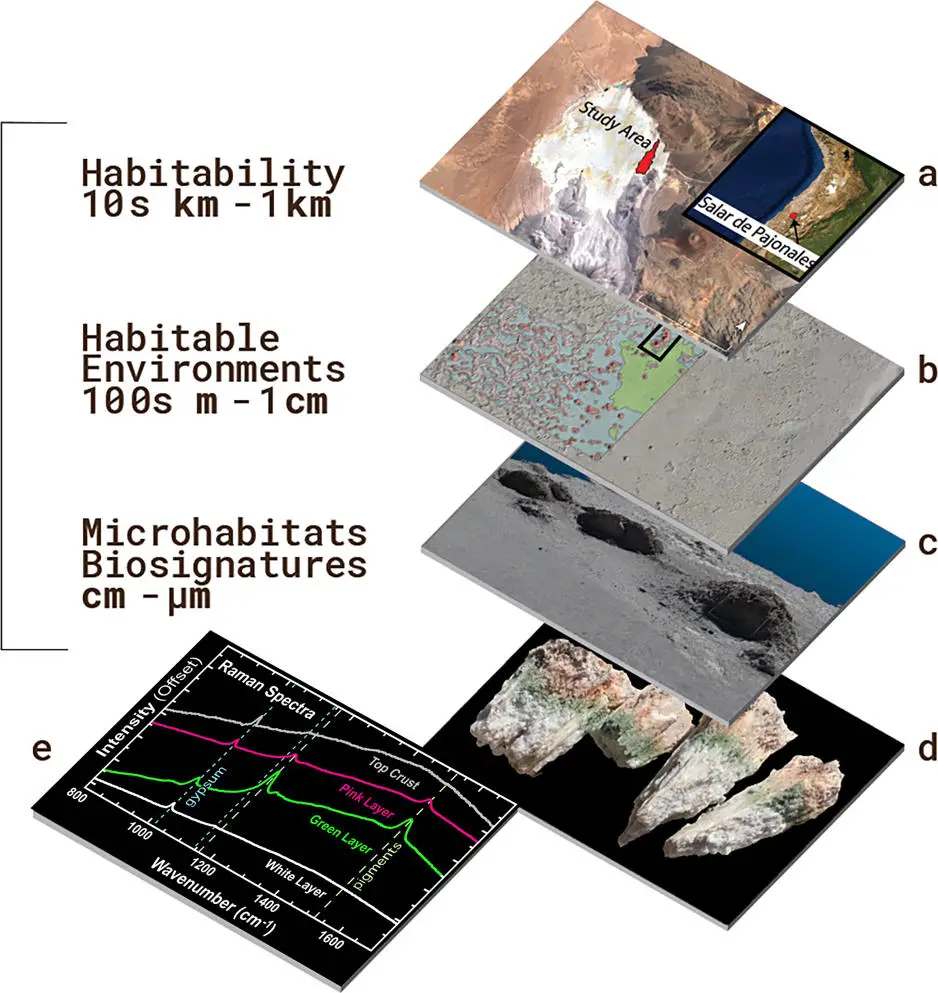
Like the Perseverance team on Mars, the researchers tested how to effectively integrate a UAV/drone with ground-based rovers, drills, and instruments (e.g., VISIR on ‘MastCam-Z’ and Raman on ‘SuperCam’ on the Mars 2020 Perseverance rover).
The team’s next research objective at Pajonales is to test the CNNs ability to predict the location and distribution of ancient stromatolite fossils and halite microbiomes with the same machine learning programs to learn whether similar rules and models apply to other similar yet slightly different natural systems. From there, entirely new ecosystems, such as hot springs, permafrost soils, and rocks in the Dry Valleys, will be explored and mapped. As more evidence accrues, hypotheses about the convergence of life’s means of surviving in extreme environments will be iteratively tested, and biosignature probability blueprints for Earth’s key analog ecosystems and biomes will be inventoried.
“While the high-rate of biosignature detection is a central result of this study, no less important is that it successfully integrated datasets at vastly different resolutions from orbit to the ground, and finally tied regional orbital data with microbial habitats,” said Nathalie A. Cabrol, the PI of the SETI Institute NAI team. “With it, our team demonstrated a pathway that enables the transition from the scales and resolutions required to characterize habitability to those that can help us find life. In that strategy, drones were essential, but so was the implementation of microbial ecology field investigations that require extended periods (up to weeks) of in situ (and in place) mapping in small areas, a strategy that was critical to characterize local environmental patterns favorable to life niches.”
This study led by the SETI Institute’s NAI team has paved the way for machine learning to assist scientists in the search for biosignatures in the universe. Their paper “Orbit-to-Ground Framework to Decode and Predict Biosignature Patterns in Terrestrial Analogues” is the culmination of five years of the NASA-funded NAI project, and a cooperative astrobiology research effort with over 50 team members from 17 institutions. In addition to Johns Hopkins Applied Physics Lab and the University of Oxford, the Universidad Católica del Norte, Antofagasta, Chile supported this research.
Reference: “Orbit-to-ground framework to decode and predict biosignature patterns in terrestrial analogues” by Kimberley Warren-Rhodes, Nathalie A. Cabrol, Michael Phillips, Cinthya Tebes-Cayo, Freddie Kalaitzis, Diego Ayma, Cecilia Demergasso, Guillermo Chong-Diaz, Kevin Lee, Nancy Hinman, Kevin L. Rhodes, Linda Ng Boyle, Janice L. Bishop, Michael H. Hofmann, Neil Hutchinson, Camila Javiera, Jeffrey Moersch, Claire Mondro, Nora Nofke, Victor Parro, Connie Rodriguez, Pablo Sobron, Philippe Sarazzin, David Wettergreen, Kris Zacny and the SETI Institute NAI Team, 6 March 2023, Nature Astronomy.
DOI: 10.1038/s41550-022-01882-x
The SETI NAI team project entitled “Changing Planetary Environments and the Fingerprints of Life” was funded by the NASA Astrobiology Program.

